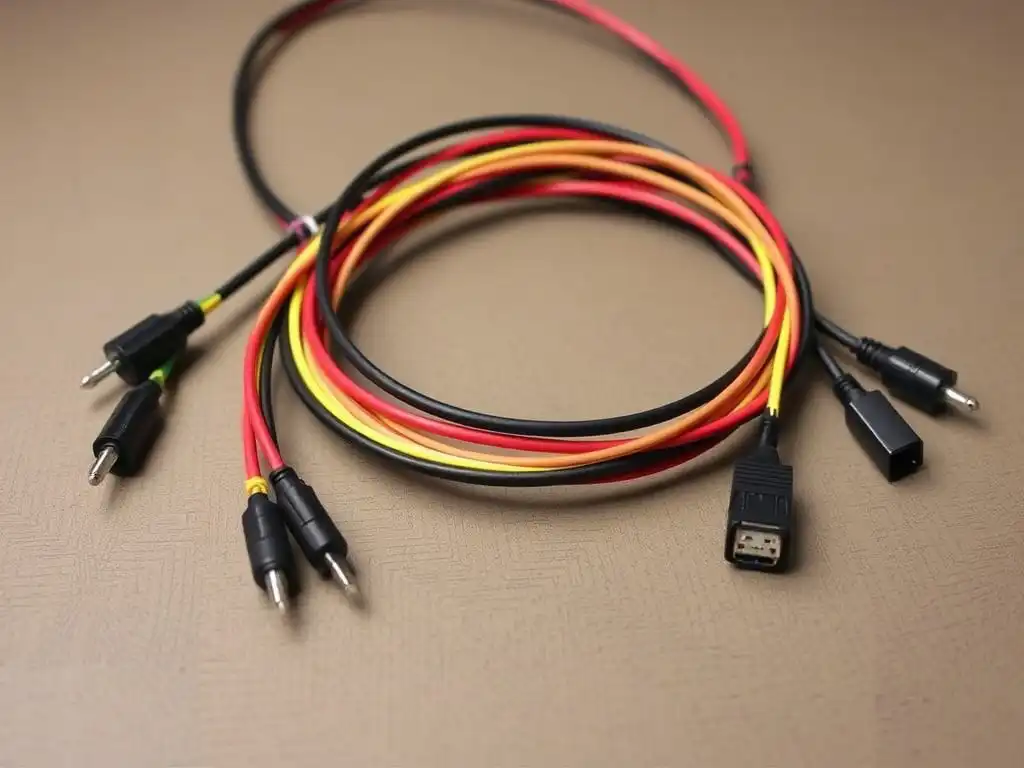As a professional automotive cable manufacturer,we are well aware of the critical role that automotive cables play in automotive applications.Automotive cables,also known as automotive cables or vehicle cables,are designed to transmit power and data signals throughout the vehicle.From powering essential systems to facilitating communication between different electronic modules,these cables are essential.In this detailed article,we will explore the various uses of automotive cables and the basic characteristics that make them essential in the automotive industry.
1.Power Transmission
1.1 Battery and Starting Circuit
One of the main uses of automotive cables is to transmit power from the battery to the starter motor and other important electrical components.These high-current cables must be made of materials such as multi-strand copper or aluminum,which have excellent conductivity and minimal voltage drop.Strong insulation materials such as PVC or cross-linked polyethylene(XLPE)are used to protect against harsh environmental conditions and mechanical stress.
1.2 Alternator and Charging System
Automotive cables are also an integral part of the vehicle’s charging system,used to connect the alternator to the battery and distribute power to various systems when the engine is running.These cables must withstand high temperatures and constant vibration,requiring excellent thermal and mechanical properties.
2.Signal and Data Communication
2.1 Sensor Wiring
Modern vehicles are equipped with a large number of sensors that provide real-time data on engine performance,fuel efficiency,emissions,and more.Automotive cables connect these sensors to the Electronic Control Unit(ECU)and ensure accurate data transmission.Shielded cables are often used in these applications to minimize electromagnetic interference(EMI)and ensure precise signal integrity.
2.2 In-Vehicle Networks
With the advent of Advanced Driver Assistance Systems(ADAS)and autonomous driving technology,the importance of in-vehicle networks has grown exponentially.Automotive cables are used for communication protocols such as CAN(Controller Area Network),LIN(Local Interconnect Network),and FlexRay to facilitate data exchange between various electronic modules.These high-speed data cables must have low signal attenuation and high EMI resistance.

3.Lighting Solutions
3.1 Exterior and Interior Lighting
Automotive cables are critical for both exterior and interior lighting of vehicles.For exterior applications such as headlights,taillights,and turn signals,the cables must be durable enough to withstand weather conditions,UV exposure,and mechanical wear and tear.High-quality insulation materials ensure longevity and reliability.Interior lighting systems,including dashboard lighting and ambient lighting,also rely heavily on automotive cables.These cables need to be flexible,easy to install,and resistant to the wear and tear of normal use.
4.HVAC System
4.1 Heating,Ventilation,and Air Conditioning
The HVAC system is an essential comfort feature of any vehicle,and it relies on a network of automotive cables to control its various components.The cables connect sensors,actuators,and control modules,facilitating the efficient operation of the HVAC system.Given the variable temperature conditions,these cables must have excellent thermal stability and moisture resistance.
5.Safety Mechanisms
5.1 Airbag and Restraint Systems
Automotive cables are integral to the activation of airbags and seatbelt pretensioners,both of which are critical safety features.In an emergency,these cables transmit the signals that deploy the airbags and lock the seatbelts,protecting passengers from injury.The reliability of these cables is critical,often requiring redundant wiring configurations and stringent quality control measures.
5.2 Advanced Safety Features
Modern vehicles are equipped with advanced safety features such as anti-lock braking systems(ABS),traction control,and lane keeping assist.These systems rely on a network of sensors and control units connected via automotive cables.These cables need to ensure reliable data transmission and power delivery to maintain the functionality and effectiveness of these safety features.
Automotive cables are an integral part of the electrical architecture of modern vehicles.Their uses span multiple areas,including power transmission,data communications,lighting,HVAC systems,and safety mechanisms.As a professional automotive cable manufacturer,we pride ourselves on producing cables that meet the highest quality and performance standards.
Our expertise and advanced manufacturing processes ensure that our automotive cables meet industry standards set by organizations such as ISO and SAE.We continually strive to innovate and improve our products to meet the changing needs of the automotive industry,ensuring that our customers receive cables that improve the safety,efficiency,and functionality of their vehicles.Our commitment to excellence has made us a trusted partner to automotive manufacturers around the world.


